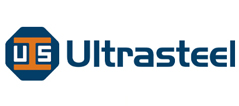INDUSTRIES
Industrial plants, as an important infrastructure to support industrial production, include not only the main workshops, but also various auxiliary rooms and ancillary facilities. Whether in industry, transportation, commerce, construction, or in scientific research and schools, factory buildings are indispensable production bases.
Steel has high strength and excellent tensile and compressive properties, and is capable of withstanding enormous external pressures and loads. This enables steel to give industrial plants outstanding durability, ensuring that they maintain their structural integrity over time. This stability is essential for the proper functioning of the plant during continuous production.
Steel structures exhibit greater strength and rigidity than traditional concrete structures. Due to the relatively low density of steel, the overall structure is lighter. This lightweight design helps reduce the burden of foundation design and further enhances the seismic performance of the building. This structural choice is especially important in earthquake-prone areas, and can significantly reduce the potential damage caused by earthquakes to plant buildings.
The way steel structures are constructed also adds advantages to their use in industrial plants. Typically, the components of a steel structure are prefabricated in a factory and then transported to the site for assembly. This approach greatly simplifies the construction process, improves efficiency and significantly shortens the project cycle. For industrial projects that need to be put into production quickly, this type of construction method is undoubtedly a huge advantage. The assembly process of prefabricated components is also more precise and reliable, reducing errors and safety risks associated with on-site construction.
The malleability of steel also provides designers with more room for creativity. They can design a variety of complex shapes and structures to meet the specific needs of different industrial plants. Whether it is a large span space, unique exterior shape or complex interior structure, steel structure can easily cope with it, bringing greater design flexibility to industrial plants. This flexibility not only meets diversified architectural needs, but also injects a sense of modernity and aesthetics into the industrial plant.

